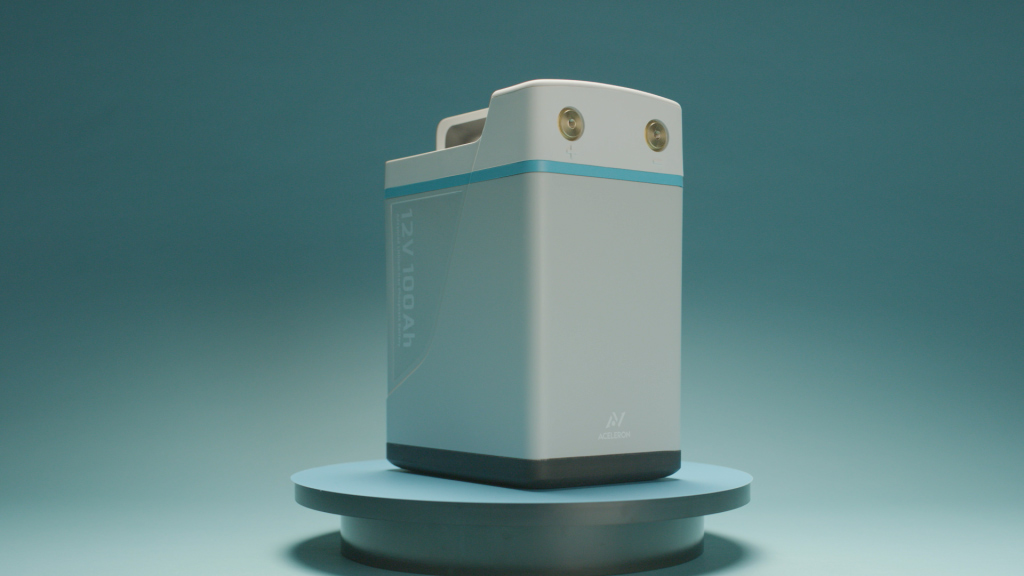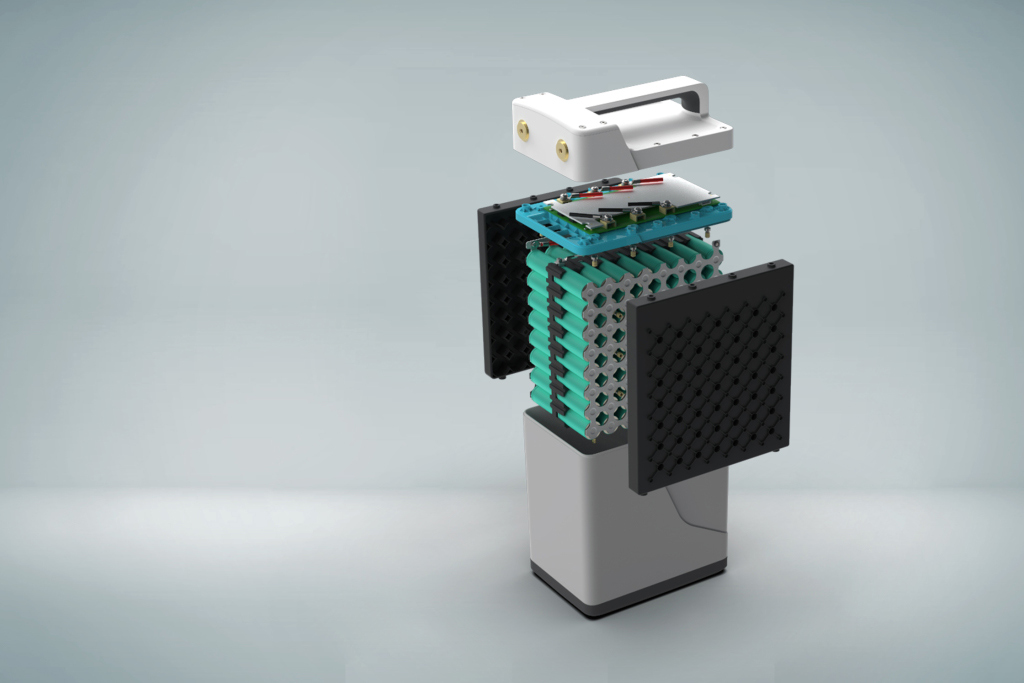當今世界,又一場電力革命正方興未艾。不管是汽車、房子還是工業生產,仿佛一切都在電動化。而在這個過程中,一場危機已經悄然逼近——我們用完的廢舊電池都去了哪里?
這就是電力革命面臨的環保悖論,也是Aceleron Energy公司致力于解決的問題。Aceleron Energy是一家專門從事電池維修和回收利用的初創公司。
這家公司是由阿姆里特?錢丹和卡爾頓?康明斯于2015年在英格蘭的西部城市伯明翰創辦的。該公司認為,目前全球都在為2050年實現凈零排放的目標而大力推動電力革命,因而導致了電池產量的激增。所以在廢舊電池的處理上,必然存在巨大的商機。

據國際能源署預測,在全球都在積極履行《巴黎協定》的大背景下,到2030年,僅用于輕型汽車的鋰電池產量就將在2019年的基礎上增長20倍。
廢舊電池回收行業正在迅速發展。市場研究機構Research & Markets的一份市場研究報告發現,2019年,廢舊電池回收行業的市值約為4.03億美元。但隨著電動汽車和其他基礎設施的需求日益增長,預計到2027年,電池回收行業的規模將增長3倍以上。
Aceleron最初只是一家兩個人的小公司,現在它已經擁有了30名員工,2020年的營收入也達到了100萬英鎊(約合140萬美元)。目前,這家成立僅6年的公司的估值已經達到5000萬美元(約合7080萬美元)。去年,該公司還從英國的麥西亞基金管理公司(Mercia Fund Management )和BGF公司處拉到了200萬英鎊(約合280萬美元)的風險投資。
環保悖論
曾幾何時,大容量電池也像你在遙控器和玩具里用的那種小型電池一樣,是一種用完即棄的產品。但隨著電池越做越大,功率越來越高,這種方法無疑是非常浪費的。
Aceleron Energy公司指出,當車用和家用的大容量電池停止投入使用時,它們往往還有七成的能量沒有用盡。而在這些尚未到達使用壽命的電池中,大約只有5%得到了回收。
該公司創始人阿姆里特?錢丹指出:“這就像你在高速公路上開車,但你的車子出了故障。現在很多人的做法就相當于把車子直接報廢掉了,而不是去修理它。”

考慮到汽車、住宅、大型建筑、電網和可再生能源發電站等都需要用到大容量電池,而它們要求的電池標準各不相同,因而“用完即棄”的電池處理模式顯然是不劃算的。一塊電池在某一用途上可能不敷使用了,但它在另外某種用途上說不定還算得上“滿血狀態”。
Aceleron公司就開發了這樣一種可以定期維護和重復利用的電池。比方說,一旦它無法再用于給電動汽車供能了,它就可以用于提供住宅用電。該公司并不單獨銷售電池,而是在世界各地發展合作伙伴,由他們來銷售電池并提供服務——聽起來是不是有點像汽車的經銷商模式?現在他們的業務已經從英國發展到了巴巴多斯和肯尼亞。
技術原理
錢丹介紹道,他們之所以創辦這家公司,還要追溯到2015年一次午飯上的談話。當時,他和康明斯談到電動汽車的興起必然會造成大量電池浪費的問題。
他和康明斯意識到,市面上還沒有一種方法能解決廢舊電池的浪費問題。另一方面,市場對可再生能源的需求不斷增長,而目前“用完即棄”的廢舊電池處理模式顯然與之不相匹配。
這家年輕的公司先是拆解了很多不同行業使用的鋰電池,并且試圖進行回收。不過他們發現,很多電池制造商使用了點焊和膠水等永久性的組裝技術,使這些電池極難回收。
康明斯表示,要拆解這些電池,“要么太危險,要么太耗費勞動力。所以我們沒有只關注電池的重復利用問題,而是把重點放在了重新研發電池的組裝技術上。”這樣才能使這些電池自然地更易于回收。
這種電池采用加壓工藝組裝,它采用了一系列可拆卸的緊固件,將一批單個的電池單元組裝進電路。從而使這些電池能夠拆解回收,甚至可以單獨修理或更換其中的部分電池單元。而電池在其生命周期內也很容易進行維保和更換。
錢丹表示:這種方法“就跟做三明治差不多。”

這樣一來,該公司就可以輕松對電池進行拆解,并且按照實際需要進行使用。比如汽車的電池有很高的功率要求,而一旦電池老化,無法達到汽車所需的負載,那么這些電池仍然可以用于大型公寓樓宇的發電機。
這樣就產生了一種“梯次效應”。也就是在電池電力自然衰減的過程中,它可以被用于不同的用途。最后,它還可以被拆解,而且它的零部件仍然可以回收使用。
康明斯表示:“如果你看看汽車行業,你就會發現,維修和升級服務本身,就是一個完整的商業鏈條。”他認為電池行業也會形成類似的業態。
“我們生活在一個資源有限的星球上,在發展任何新技術的過程中,‘用完即棄’的思路都是不可取的,也根本不可行。”康明斯說。(財富中文網)
譯者:樸成奎
當今世界,又一場電力革命正方興未艾。不管是汽車、房子還是工業生產,仿佛一切都在電動化。而在這個過程中,一場危機已經悄然逼近——我們用完的廢舊電池都去了哪里?
這就是電力革命面臨的環保悖論,也是Aceleron Energy公司致力于解決的問題。Aceleron Energy是一家專門從事電池維修和回收利用的初創公司。
這家公司是由阿姆里特?錢丹和卡爾頓?康明斯于2015年在英格蘭的西部城市伯明翰創辦的。該公司認為,目前全球都在為2050年實現凈零排放的目標而大力推動電力革命,因而導致了電池產量的激增。所以在廢舊電池的處理上,必然存在巨大的商機。
據國際能源署預測,在全球都在積極履行《巴黎協定》的大背景下,到2030年,僅用于輕型汽車的鋰電池產量就將在2019年的基礎上增長20倍。
廢舊電池回收行業正在迅速發展。市場研究機構Research & Markets的一份市場研究報告發現,2019年,廢舊電池回收行業的市值約為4.03億美元。但隨著電動汽車和其他基礎設施的需求日益增長,預計到2027年,電池回收行業的規模將增長3倍以上。
Aceleron最初只是一家兩個人的小公司,現在它已經擁有了30名員工,2020年的營收入也達到了100萬英鎊(約合140萬美元)。目前,這家成立僅6年的公司的估值已經達到5000萬美元(約合7080萬美元)。去年,該公司還從英國的麥西亞基金管理公司(Mercia Fund Management )和BGF公司處拉到了200萬英鎊(約合280萬美元)的風險投資。
環保悖論
曾幾何時,大容量電池也像你在遙控器和玩具里用的那種小型電池一樣,是一種用完即棄的產品。但隨著電池越做越大,功率越來越高,這種方法無疑是非常浪費的。
Aceleron Energy公司指出,當車用和家用的大容量電池停止投入使用時,它們往往還有七成的能量沒有用盡。而在這些尚未到達使用壽命的電池中,大約只有5%得到了回收。
該公司創始人阿姆里特?錢丹指出:“這就像你在高速公路上開車,但你的車子出了故障。現在很多人的做法就相當于把車子直接報廢掉了,而不是去修理它。”
考慮到汽車、住宅、大型建筑、電網和可再生能源發電站等都需要用到大容量電池,而它們要求的電池標準各不相同,因而“用完即棄”的電池處理模式顯然是不劃算的。一塊電池在某一用途上可能不敷使用了,但它在另外某種用途上說不定還算得上“滿血狀態”。
Aceleron公司就開發了這樣一種可以定期維護和重復利用的電池。比方說,一旦它無法再用于給電動汽車供能了,它就可以用于提供住宅用電。該公司并不單獨銷售電池,而是在世界各地發展合作伙伴,由他們來銷售電池并提供服務——聽起來是不是有點像汽車的經銷商模式?現在他們的業務已經從英國發展到了巴巴多斯和肯尼亞。
技術原理
錢丹介紹道,他們之所以創辦這家公司,還要追溯到2015年一次午飯上的談話。當時,他和康明斯談到電動汽車的興起必然會造成大量電池浪費的問題。
他和康明斯意識到,市面上還沒有一種方法能解決廢舊電池的浪費問題。另一方面,市場對可再生能源的需求不斷增長,而目前“用完即棄”的廢舊電池處理模式顯然與之不相匹配。
這家年輕的公司先是拆解了很多不同行業使用的鋰電池,并且試圖進行回收。不過他們發現,很多電池制造商使用了點焊和膠水等永久性的組裝技術,使這些電池極難回收。
康明斯表示,要拆解這些電池,“要么太危險,要么太耗費勞動力。所以我們沒有只關注電池的重復利用問題,而是把重點放在了重新研發電池的組裝技術上。”這樣才能使這些電池自然地更易于回收。
這種電池采用加壓工藝組裝,它采用了一系列可拆卸的緊固件,將一批單個的電池單元組裝進電路。從而使這些電池能夠拆解回收,甚至可以單獨修理或更換其中的部分電池單元。而電池在其生命周期內也很容易進行維保和更換。
錢丹表示:這種方法“就跟做三明治差不多。”
這樣一來,該公司就可以輕松對電池進行拆解,并且按照實際需要進行使用。比如汽車的電池有很高的功率要求,而一旦電池老化,無法達到汽車所需的負載,那么這些電池仍然可以用于大型公寓樓宇的發電機。
這樣就產生了一種“梯次效應”。也就是在電池電力自然衰減的過程中,它可以被用于不同的用途。最后,它還可以被拆解,而且它的零部件仍然可以回收使用。
康明斯表示:“如果你看看汽車行業,你就會發現,維修和升級服務本身,就是一個完整的商業鏈條。”他認為電池行業也會形成類似的業態。
“我們生活在一個資源有限的星球上,在發展任何新技術的過程中,‘用完即棄’的思路都是不可取的,也根本不可行。”康明斯說。(財富中文網)
譯者:樸成奎
As the electric revolution—spanning from cars, to houses, to industrial sites—takes off, another crisis is already looming in the background. When we don’t need that battery anymore, where does it go?
That’s the paradox fueling Aceleron Energy, one of a new batch of upstart companies designed to create a network offering new, reused and repaired batteries.
The startup, founded in 2015 in the west England city of Birmingham by Amrit Chandan and Carlton Cummins, is taking advantage of a surge in battery manufacturing, all to support the vast electrification needed to bring global emissions to net-zero by 2050.
Under a scenario where the world is on track to fulfil the Paris Agreement, lithium batteries for light-duty cars alone will have to grow 20 times over from their 2019 base by 2030, according to projections from the International Energy Agency.
The recycling industry for those batteries is growing rapidly, too. A market research report from Research & Markets found that the sector was worth $403 million in 2019, but expected that it would be more than triple in size by 2027 as demand for electric vehicles and other infrastructure grows.
For Aceleron, what started out as a two person operation now has 30 employees with £1 million ($1.4 million) in revenue in 2020. Since its start six years ago, the company has grown to a valuation of £50 million ($70.8 million). Last year, the company raised £2 million ($2.8 million) in venture capital funding from the U.K.’s Mercia Fund Management and BGF.
The power paradox
The large-scale battery industry, much like the market for small, consumer batteries for remotes and toys, has traditionally been a one-stop industry. You buy it, you use it, it runs out and you throw it away. But as batteries have become larger and more powerful, this model looks undeniably wasteful.
Currently, when large scale batteries that could power vehicles or homes are deemed finished, around 70% of its energy hasn’t been used up, according to Aceleron Energy. And of these batteries that still have life left, only 5% are recycled.
“It’s kind of like you're driving down the highway and something goes wrong with your vehicle,” Chandan says. “What we do at the moment with batteries is the same as scrapping the vehicle if something goes wrong with it, rather than getting it repaired.”
This throw-away model also doesn’t make sense when you consider that batteries used inside cars, houses, large-scale buildings, grid support, renewable energy—which are crucial to curbing carbon emissions—all have different requirements, meaning a battery that was deemed useless for one application could still be full of life when it comes to another.
Aceleron has developed a battery that can be serviced, maintained and reused, repurposed for, say, residential uses when they’re no longer able to be used in an electric car. Instead of selling the batteries individually, they develop partners across the world to sell the batteries and service them, much like car dealerships, across the U.K., Barbados and Kenya.
How it works
The business began as a lunchtime conversation in late 2015 according to Chandan, over the battery waste that would be generated by the EV boom.
He and Cummins recognized that there wasn’t a good way of dealing with the waste that comes from end-of-life batteries, and saw the ever-increasing demand for renewable energy did not align with the linear model of produce, use, toss.
The young company started out by taking apart lithium batteries from different sectors and trying to recycle them. But what they discovered was batteries used by their now competitors used permanent assembly technologies, like spot welding and glue to keep the technologies together.
To take them apart, “it just was dangerous or just very labor intensive,” says Cummins. “So instead of trying to focus just on reusing batteries, we actually pivoted the company and started to focus on reinventing how you assemble batteries all together,” in order to make them naturally more reusable.
The batteries are assembled using compression technology, which puts individual fuel cells into a circuit using a series of removable fasteners. Being able to take apart the battery and replace and fix certain individual fuel cells allows the battery to be serviced and replaced throughout its lifespan.
It’s a model that’s “similar to making a sandwich,” Chandal says.
This allows the company to take apart the battery and use them for what they need. Batteries for a car have very high power requirements, for example, but once they are unable to reach that load, the battery could still be used in a large apartment building generator.
That creates a “cascading” effect—allowing the battery to be used for different purposes as its power naturally degrades. At the end, it can be taken apart and its parts can be repurposed.
“If you look at the automotive industry, the maintenance and the upgrade is a whole business engine in and of itself,” says Cummins. He’s arguing that the business of batteries should be similar.
“We just don’t see it making sense to build up new manufacturing for new technologies on linear models, when we live on a planet with limited resources," Cummins says. "It doesn’t really add up.”






